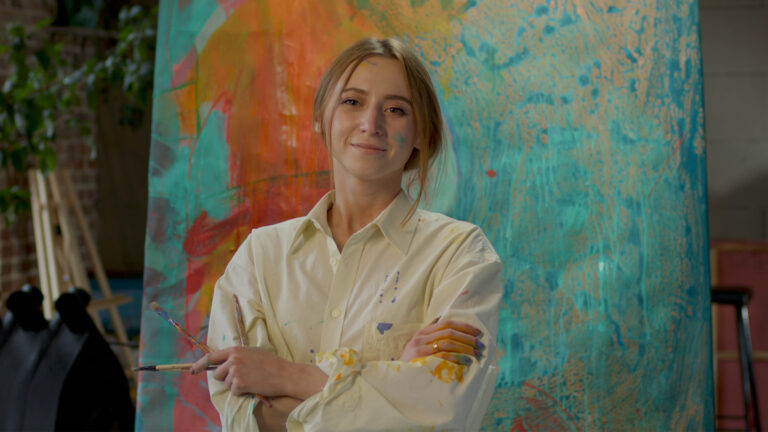The idea of humans traveling to space has been the stuff of dreams for generations.
From the first manned Mercury flight in 1961 until 2011’s final Space Shuttle mission, NASA’s contributions to space exploration have captured our imaginations and our hearts. And with a series of auspicious firsts, some of the most indelible moments in many American’s lifetimes were linked to those historic achievements.
So when NASA, after a nine-year hiatus, announced that as part of its Commercial Crew Program (CCP) it would launch the SpaceX Crew Dragon spacecraft from the Kennedy Space Center, it marked another memorable first.

Fittingly, creative collaborators Oxcart Assembly joined forces for the very first time to produce a bold new launch identity package. As the centerpiece of the package, the eclectic group, with a collective resume of projects ranging from Daft Punk and Jackass to Dupont and Toyota, produced a video timeline that spanned sixty years—and three generations—of remarkable firsts in an emotional sixty-second title sequence.
Today’s Made in Frame covers the creation of NASA’s new Launch America brand by a coast-to-coast team of visionaries who enjoy pushing the limits of what’s possible—and how they overcame the boundaries of time and space by using Frame.io.
A meeting of the minds
Before this project, Oxcart Assembly principals Jeff Jetton, Tony Gardner, Greg Moore, and Adam Fitzgerald had never worked together as a group. And, in fact, they spent only one day in the same physical space throughout the entire two-month production.
Like his colleagues, Tony Gardner, Greg Moore, and Adam Fitzgerald, Jeff Jetton has an impressive resume. Each of them comes with heavyweight resumes from different sectors of the industry. Jeff is a marketing strategist known for crafting viral moments at BuzzFeed and high-profile image campaigns at R/GA. Tony is a special effects wizard known for his iconic work in film and television, from Michael Jackson’s Thriller to Bad Grandpa to Sacha Baron Cohen’s daring Who Is America. Greg and Adam are the co-founders of Iron and Air Media, creating print and video stories focused on the art and craft of motorcycle culture for brands from Toyota to Converse.
That’s the short version of who they are. How they came to form Oxcart is a longer story, and one that might make you wonder whether the universe somehow had a hand in bringing them together at this time for this project.
While Jeff was Strategy Director at R/GA doing background research for DuPont’s first public campaign in 20 years, he tracked down several folks at NASA to talk about DuPont’s role in the James Webb Space Telescope’s material science. Among those he talked to was Thaddeus Cesari, a frequent customer of Jeff’s popular Washington D.C. ramen shop, Toki Underground.
The interior of Toki Underground, where Jeff met Thaddeus Cesari.
The two developed a friendly working relationship, which led to Jeff producing a social campaign in which he took over comedian Tig Notaro’s Twitter account with NASA updates on the James Webb telescope. The well-received campaign, in which influencers like Casey Neistat and Tony Hawk participated, led to Jeff’s meeting NASA Creative Director Paul Wizikowski.
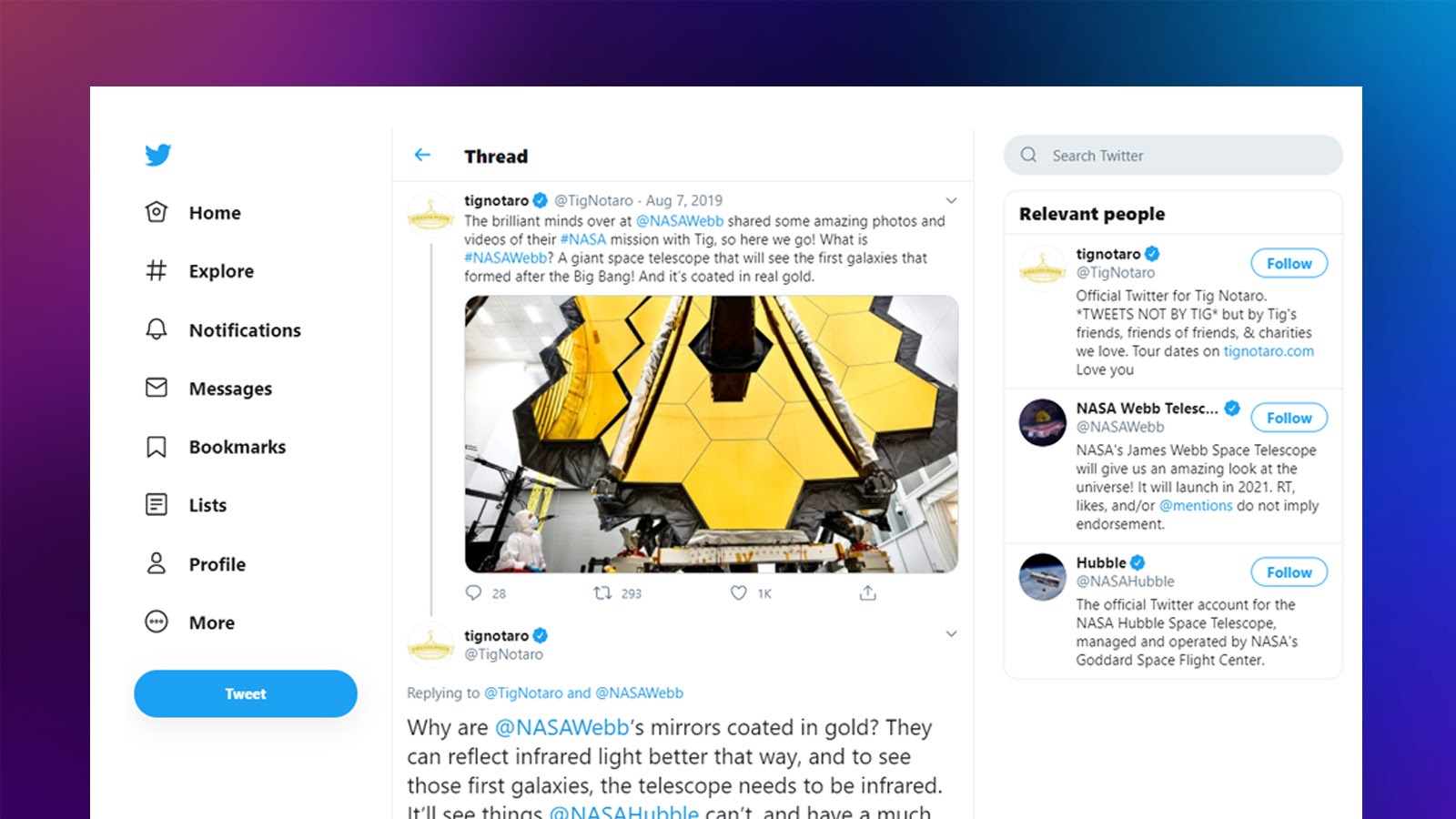
Jeff had the idea to choreograph the telescope’s 2021 launch with new music by Daft Punk, whose “robot” creative personas Tony had helped design. Jeff sent Tony a cold LinkedIn introduction, which months later culminated in Jeff, Tony, Greg, and Adam meeting in Southern California for a one-day visit to Northrop Grumman to see the telescope and discuss possibilities.
For various reasons, the telescope launch project has yet to materialize. However, this introduction gave the team the opportunity to bid on other NASA projects, the first of which was a contract to provide the new Launch America branding package. In addition to the opening title sequence, it included a redesigned logo and screen graphics to be used during the five-hour live launch broadcast.
Closing the distance
Once the project was awarded, the four partners quickly formalized their status as an agency. And then COVID happened.
After having spent just that one day together, they were now embarking on a large and complicated project from all different parts of the country. Jeff was in New York, Tony in Southern California, and Greg and Adam were based in New Hampshire.

Jeff made the case to Paul that the title sequence would benefit from original scoring, and brought Washington D.C. composer (and Fugazi drummer) Brendan Canty on board, whose son, Leo, served as the intern on the project. When both Leo and Brendan’s wife came down with COVID, Leo had to quarantine in a different part of the house. Literally, the only time Brendan and Leo saw each other during that time was over Zoom.
Also integral to the team was Erik Loften, a Washington D.C.-based designer and longtime collaborator of Jeff’s, who handled all the motion graphics and editorial.
Spanning time and space
Jeff describes receiving a “tsunami” of astonishing material from the NASA librarians. There were literally hundreds of hours of archival footage that had to be culled through to find the perfect clips to build the narrative title sequence. “We basically had 60 days to select 60 seconds to represent 60 years of NASA history,” Jeff says. “There was a massive amount of footage in Dropbox, but because of the way it had been transferred from physical reels from decades past, it was challenging to sort through. Erik had shown me some presentations of his work in Frame.io and it looked great. So I thought we should just use that instead and I signed up for an account.”
We basically had 60 days to select 60 seconds to represent 60 years of NASA history.
In yet another coincidence, Jeff had sat next to Frame.io Sr. Product Marketing Manager Rahul Kothari during their time at BuzzFeed. Jeff and Rahul reconnected and discussed how best to get all the footage uploaded to Frame.io. Fortunately, there was already an alpha version of the new Frame.io Transfer app, which enables super-fast bulk up- and downloads. This would be a perfect test case for the new app.
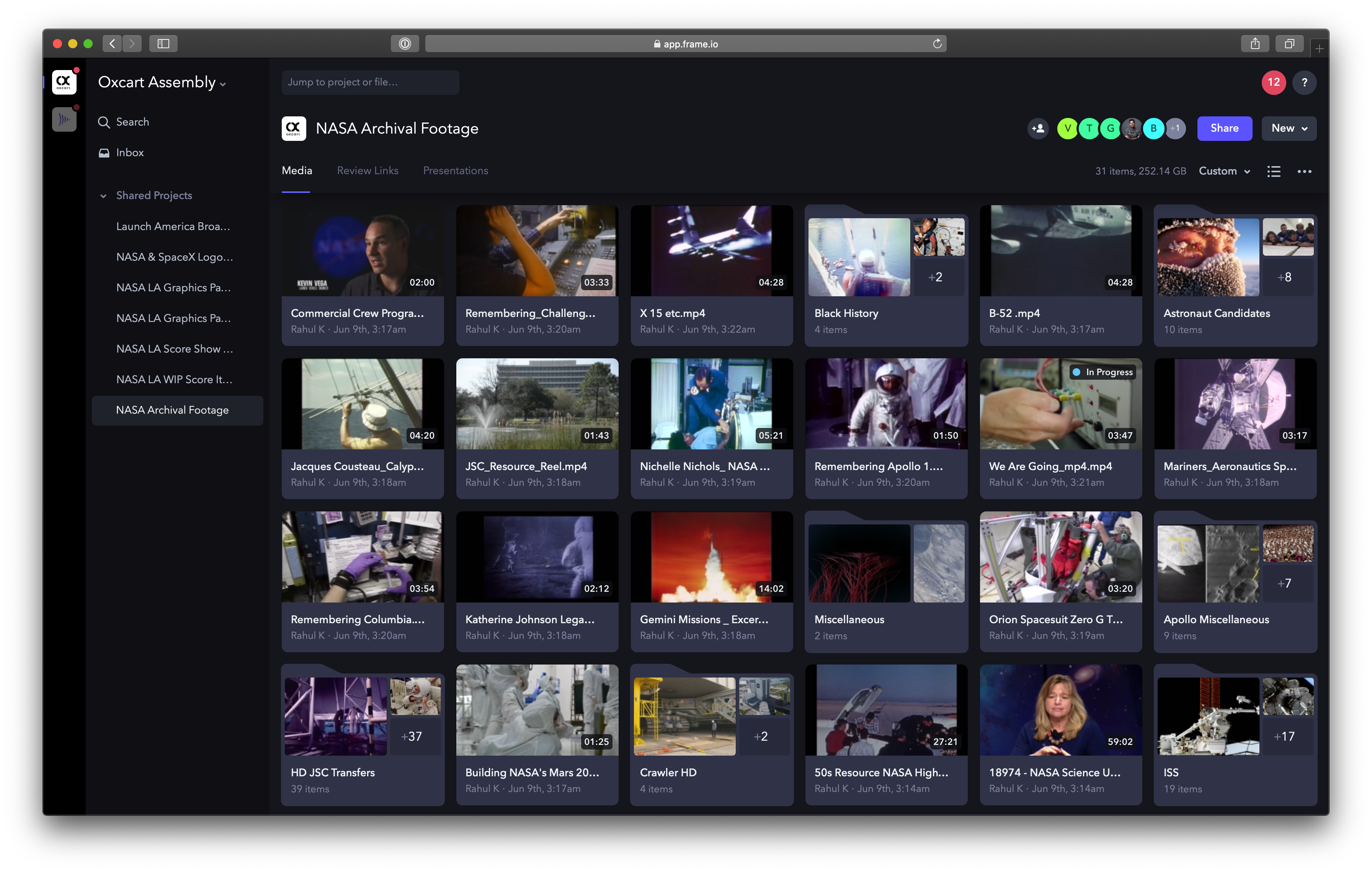
“All told, we uploaded 252.14GB from NASA’s servers,” Rahul says. “And it only took about two hours. Most of the files were small because they were originally at 720p, so we uploaded at 1280×720, and then Erik was able to pull what he needed into Adobe After Effects.”
“I went through about 200 hours of footage myself,” Jeff says. “And it was more than one person could handle. Leo really helped a lot. But then my mother also got involved.”
Because Jeff and the rest of the team hadn’t lived through the early days of the NASA program, they couldn’t fully identify or contextualize some of the most significant moments. Jeff’s mother, Janice, on the other hand, could, and did. “She went through hundreds of hours of footage and thousands of photos, which coincided with her lifetime. She actually sourced a number of the clips that we used in the final, based on her own emotional connection with the American space program. I’m not kidding when I say that my mom did my homework!”

So far, the team had three generations putting the pieces together to help craft the narrative and the look. But there were even more strangely fortuitous connections yet to be uncovered.
Designer Erik Loften’s wife’s grandfather had worked on the Apollo missions and provided a personal photograph of himself teaching astronaut Neil Armstrong how to use the Apollo Lunar Lander’s landing-gear mechanism. “The people at NASA had never seen this photo before, and we wanted to do it justice,” Jeff said. “So we came up with one of the main stylized treatments for the Launch America brand identity—parallaxed photos of NASA employees in action.”
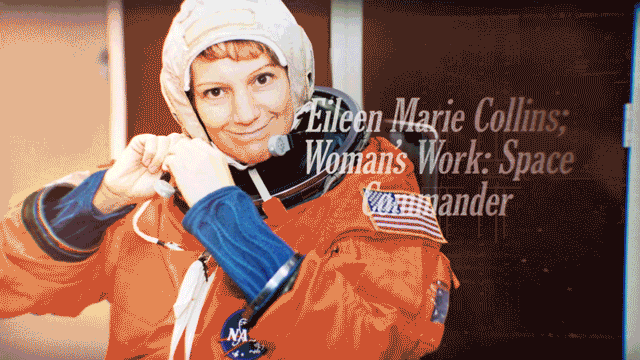
The team also discovered that Tony’s late grandfather, Lawrence Gardner, had developed a number of patents and trademarks in the ‘50s and ‘60s for valves and other inventions that still exist on the launch pads at the Kennedy Space Center. “Tony briefly mentioned this on an early text thread, so I looked them up on the Patent Trademark Office’s website,” Jeff said.
“Tony had never seen the drawings before, and we used them as inspiration for creating the signature design elements for the graphics package. You can actually see one of Tony’s grandfather’s schematic drawings turned into motion animation in the show open.” Given Tony’s career as a robotics and special effects expert and an inventor in his own right, “it was interesting to see how threading personal histories into the graphic identity formed a surreal pattern, where our own lineage had a direct effect on our work.”
A cinematic approach
Unconventional creatives tend to take unconventional approaches, and this team is well known for their ingenuity and thinking outside the box. It’s part of how a special effects expert became the “grand visionary” of NASA’s brand identity.
“We decided to take more of a Hollywood versus a Madison Avenue approach,” Jeff said. “If you look at some of the movies Tony has been involved with—Cult of Chucky and Zombieland, for example—they have iconic title sequences that inspired us.” They also viewed opening sequences from Saul Bass (Grand Prix, in particular) for additional inspiration, deciding to use the technique of animated mortises to incorporate more of the significant imagery that would move them through the timeline in an elegant and impactful way.
A sweeping narrative deserves a fully cinematic treatment, which is why Jeff tapped Brendan to compose an original score. The two had collaborated on numerous projects over the years, and it didn’t take long for him to find the heart of the story. “At first I was connecting to the idea of space,” Brendan says. “But the more I learned about the past 60 years of NASA, I realized that the focus was going to be on the humanity of the astronauts, and how brave they were.”
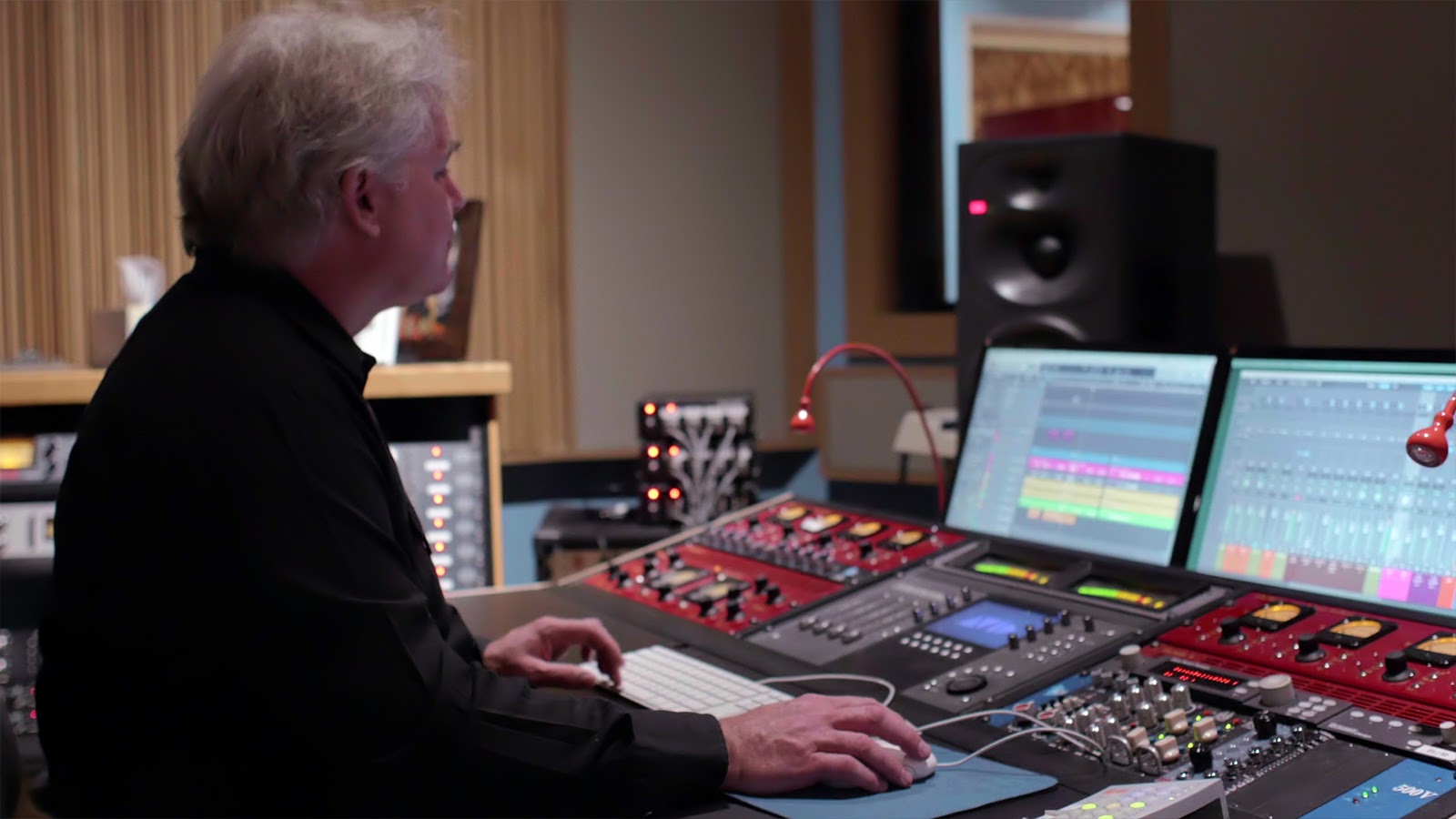
Tony agrees. “All the people, all the blood and sweat and tears. These are monumental moments in history and we wanted to be true to the spirit of all of the people who created the technology that’s making today’s reality possible.”
Not to be overlooked were the significant challenges the team themselves faced. A newly formed agency creating an iconic branding package for NASA. Vast amounts of material to be culled on a compressed schedule. A global pandemic causing them to be scattered across the U.S. in quarantine. But they doubled down on their commitment.
Leo (who’s recovered from COVID) and Janice selected and organized the footage in Frame.io so that Erik could start building the timeline. Meanwhile, Brendan began work on the score. The team needed a well-oiled and truly collaborative process between all the creatives involved—and Frame.io sat at the center of it.

“Frame.io allows you to connect and be really specific, the same way you would if you were just sitting next to someone. We could all look at the same thing as a group in real time and leave comments,” Tony said. “Or, because my schedule is so crazy, I could leave comments at 2am so they’d be there when the East Coast crew woke up and we could keep the ball rolling.”
Not because it was easy
In the immortal words of John F. Kennedy, the NASA missions were important because they “serve to organize and measure the best of our energies and skills.” And because achieving the goals of the NASA missions was hard, the Oxcart team made it their mission to honor the efforts of the many people who sacrificed for these achievements.
It was also a kind of moon shot for the newly formed collective. “It’s difficult to express how this all came about, but I credit the unique, multi-generational fabric of work and relationships with much of the final product,” Jeff said. “In a way, the outcome may have been even better because we were forced to work so intentionally. But who knows? It’s like the Butterfly Effect—if even one thing is different, how does that affect the outcome?”
This was real life and it was important.
For Tony, whose work has always lived in the world of make-believe, the opportunity to do something with historical relevance added a level of responsibility and upped the stakes. “We were working with the United States government. We had NASA supplying us with footage that we’d never seen before. And you look at the International Space Station and realize that this project encompasses the whole world. This was real life and it was important.”
Given the stakes of the project and all of the associated challenges, the tools played a huge part in the process. “It feels like you could take Frame.io out anywhere in the world and connect people who were spread out, and turn around a project of this magnitude for the government in record time and with everybody’s voice being heard,” Tony said. “In a way, this feels more collaborative than anything I’ve ever done with people face to face.”

If there’s a unifying theme for this project, it’s that of dreams. “Being part of America’s return to human space flight and getting people interested in space again is a dream come true,” Tony said.
“Throughout this process, we really did function as one team with equal voices,” Jeff said. “Tony, Greg, Adam, and I were on every call with NASA together, and we all did whatever it took. One team, one dream.”
Enabling teams to reach across time and space in service of creativity? That’s the stuff our dreams are made of at Frame.io.


